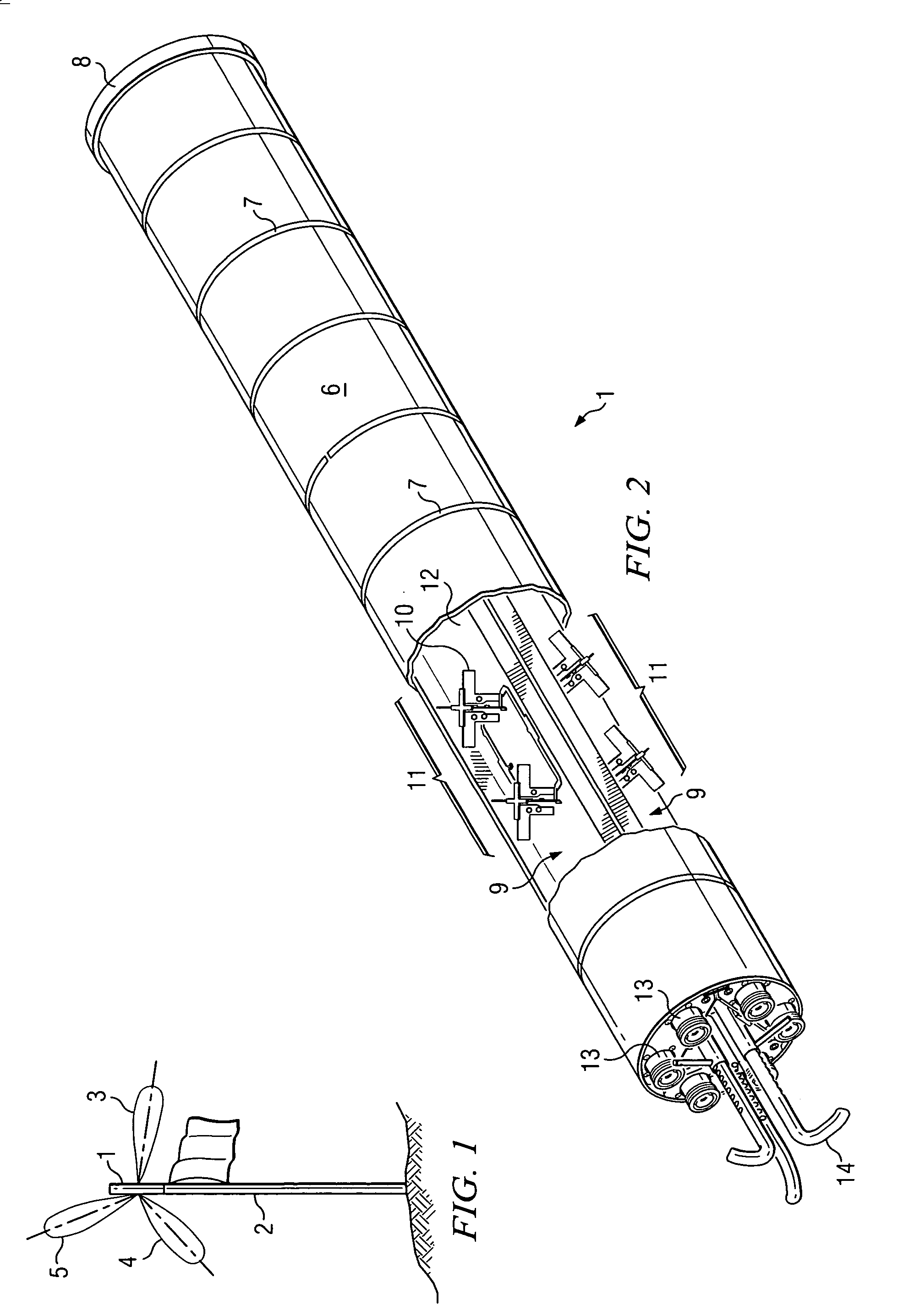Dual polarized three-sector base station antenna with variable beam tilt
a base station antenna and variable beam technology, applied in the field of antennas, can solve the problems of prior-art three-sector antennas not finding a wide application field, bulky antenna systems, and unsatisfactory aesthetics, so as to reduce friction, improve intermodulation, and minimize contact surface
- Summary
- Abstract
- Description
- Claims
- Application Information
AI Technical Summary
Benefits of technology
Problems solved by technology
Method used
Image
Examples
Embodiment Construction
[0045] One embodiment of the present invention operates in a Personal Communication System (PCS) in a frequency band 1850-1990 MHz, but which invention is applicable to others frequency bands as well.
[0046]FIG. 1 shows a three-sector base station antenna 1 according to the present invention mounted on a flagpole 2 to make it virtually invisible in the environment. FIG. 1 also illustrates the need and provision of different down tilts for each of beam 3, beam 4, and beam 5, in this case, because the terrain is not flat.
[0047]FIG. 2, 3 illustrate the dual polarized (±45°) three-sector base station antenna 1 with variable sector beam tilts 1 suitable for use in the application shown in FIG. 1 or other similar applications. The antenna 1 is enclosed by a cylindrically shaped radome 6 formed of dielectric material. Metal strips 7 on the radome 6 provide antenna 1 with better port-to-port isolation than without the strips. End cup 8 seals the top of radome 6. Inside the radome 6 are thr...
PUM
 Login to View More
Login to View More Abstract
Description
Claims
Application Information
 Login to View More
Login to View More - R&D
- Intellectual Property
- Life Sciences
- Materials
- Tech Scout
- Unparalleled Data Quality
- Higher Quality Content
- 60% Fewer Hallucinations
Browse by: Latest US Patents, China's latest patents, Technical Efficacy Thesaurus, Application Domain, Technology Topic, Popular Technical Reports.
© 2025 PatSnap. All rights reserved.Legal|Privacy policy|Modern Slavery Act Transparency Statement|Sitemap|About US| Contact US: help@patsnap.com



